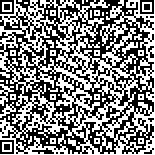| 摘要: |
| [摘要] 目的 探讨脑卒中患者陪护人员实施强化康复教育干预对患者肩痛发生和康复的影响。方法 将90例脑卒中偏瘫患者随机分为观察组和对照组各45例。对照组仅给予常规康复治疗和护理;观察组除采用常规的康复治疗和护理外,同时对患者陪护人员进行康复知识教育。观察两组患者Fugl-Meyer肩关节活动功能评分和肩痛的发生率。结果 观察组肩关节活动功能评分优于对照组,肩痛的发生率低于对照组,差异有统计学意义(P<0.05)。结论 陪护人员康复知识教育,能有效预防脑卒中偏瘫患者肩痛的发生,帮助促进肩关节活动功能的康复。 |
| 关键词: 脑卒中 陪护人员 康复知识教育 卒中后肩痛 |
| DOI:10.3969/j.issn.1674-3806.2017.06.12 |
| 分类号:R 49 |
| 基金项目: |
|
| Effect of strengthened rehabilitation education by caregivers on the hemiplegic shoulder pain in stroke patients |
|
HU Yu-jun, CHEN Qi-bo, HUANG Xiao-bei, et al
|
|
Department of Rehabilitation Medicine, the People′s Hospital of Guangxi Zhuang Autonomous Region, Nanning 530021, China
|
| Abstract: |
| [Abstract] Objective To explore the effect of strengthened rehabilitation education by caregivers on the hemiplegic shoulder pain in stroke patients.Methods 90 patients with hemiplegia were selected and were randomly divided into the observation group and the control group, with 45 cases in each group. The patients in the control group were treated with routine rehabilitation, and the patients in the observation group were treated with routine rehabilitation and the strengthened rehabilitation education that was given by the caregivers. The scores of the shoulder joint activity were evaluated by Fugl-Meyer assessment scale and the incidences of shoulder pain were calculated. The scores and the incidences were compared between the two groups.Results After the intervention, the scores of the shoulder joint activity in the observation group were significantly higher than those in the control group(P<0.05), and the incidence of shoulder pain of the observation group was significantly lower than that of the control group(P<0.05).Conclusion The strengthened rehabilitation education given by caregivers can reduce the hemiplegic shoulder pain and improve the shoulder joint activity in the hemiplegia patients. |
| Key words: Stroke Caregiver Rehabilitation education Hemiplegic shoulder pain |

